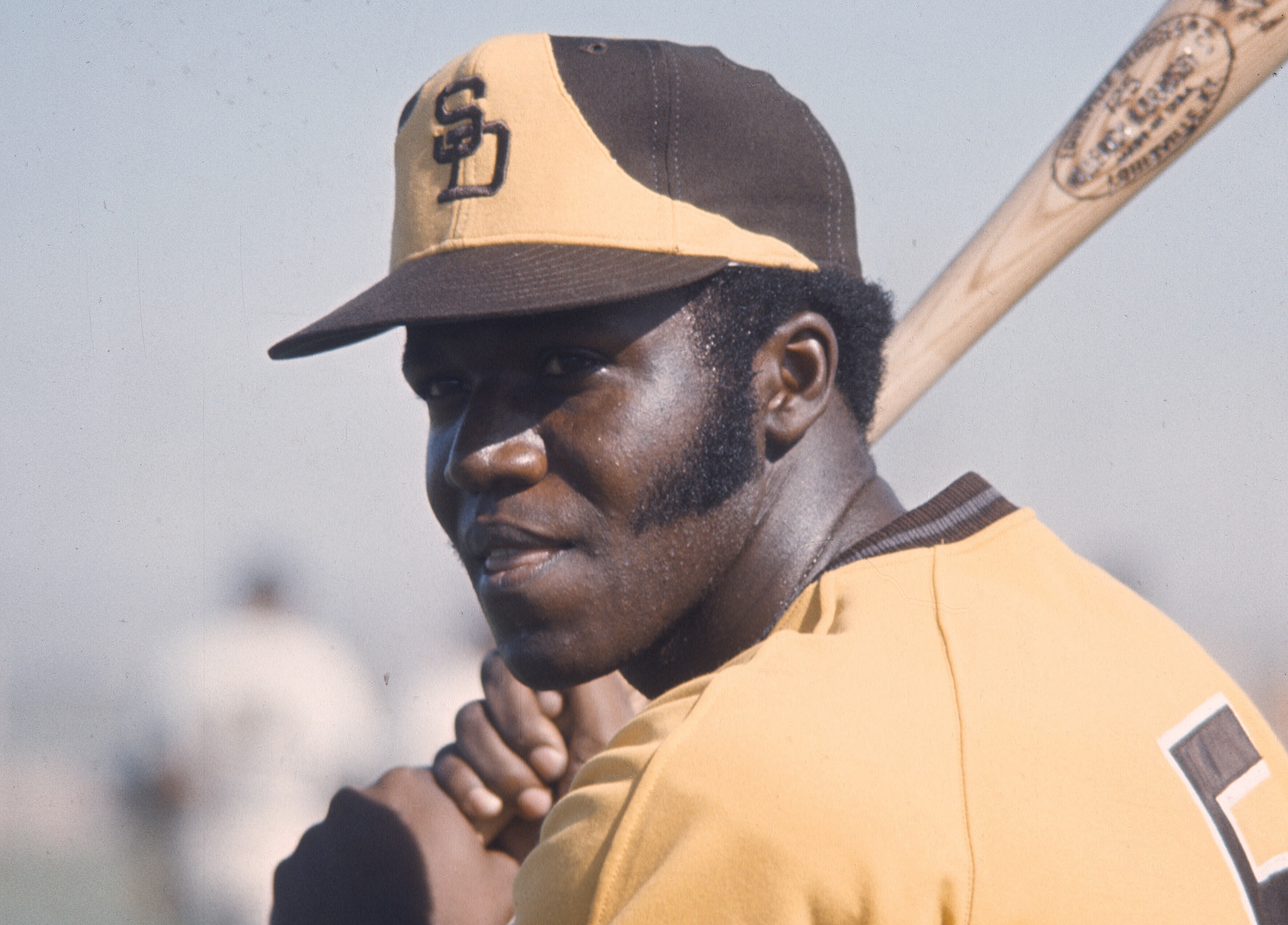With the dawn of a new baseball season creeping up on us, it is time to remember the least appreciated yet longest-lasting record in the game. It is the record for most home runs hit by a San Diego Padre, a record which turns 50 years old this coming September and is held by (we will now wait for you to try and figure out who it is, and no, it is not a senatorial candidate)...
Nate Colbert.
Yes, that Nate Colbert. The Nate Colbert you haven't thought of since before he stopped being a Padre, which means if you are under 60 years old you probably have never thought of him at all. He is the first great Padre, if you consider these the statistics of a great player, which they clearly are not. He is in truth the first Padre of any note, and the fact that his 163 homers is still the most in franchise history after five decades tells you less about Nate Colbert and more about Padres history.
In fact we mention it only because someone on the company hamster wheel noticed this little gem between stretches of avoiding work:
Manny Machado needs 26 home runs this season to become the Padres all-time leader.#MLB | #Padres pic.twitter.com/yP4ue7htcr
— Baseball Reference (@baseball_ref) March 5, 2024
Manny Machado is 26 dingers short of Colbert's mark, and since there is at least a decent chance that he will be traded by the team's new ownership before he reaches that, Colbert's absurd yet delightful record may stand for 50 more years.
Colbert explains the Padres perfectly: a team historically built on roster transients wrapped around Tony Gwynn (who had only 135 in 19 seasons himself). Gwynn was almost certainly the greatest artistic hitter the game has ever had, but he was no Nate Colbert. Live with that sentence rattling around your head awhile.
Colbert was a power-hitting (more or less) first baseman who Astros manager Harry Walker nearly ruined by trying to turn him into a slap-hitting 1B/OF. He had 60 at-bats for Houston in 1966 through 1968, with eight hits, 27 strikeouts, no homers, one walk, and a fast-track to civilian life, when Major League Baseball decided to embark on its second expansion-fee grift-o-rama by adding teams in San Diego, Montreal, Kansas City, and Seattle. Only two of those teams still exist in their present locations, and the Seattle franchise (the Pilots) lasted only one year and are mostly known for spawning Ball Four, very not-arguably the greatest baseball book of all time.
Colbert was the ninth player taken by the Padres in that expansion draft, after Downtown Ollie Brown, Dave Giusti, Dick Selma, Al Santorini, Jose Arcia, Clay Kirby, Fred Kendall, and Jose Morales (this sentence is brought to you by Comrade Roth, who is fading in and out of consciousness just reading it). Only Kendall would outlast Colbert in San Diego, and other than siring future catcher Jason Kendall is not particularly noteworthy. Then again, neither is Colbert, but here we are.
Colbert originally platooned with Bill Davis, who at 6-foot-7 provided a sizable target and not a lot else, so Colbert became the starter before the end of April, and stayed there for what passed as his breakout year: 24 homers, 66 RBI, and a place in the middle of the lineup that lasted five years. He became the first Padre to ever appear in an All-Star Game in 1972, which gives you an idea of how the Padres did in 1969, 1970, and 1971. Colbert’s 38 homers and 111 RBI that year won him enough notice to finish eighth in the MVP voting. His five-homer, 13-RBI day in August of that year in a doubleheader against Atlanta (slam, three-run homer, two two-run homers, solo shot) is one of the greatest single-day explosions in history. Additional historical note of little note: he was in the stands at Busch Stadium for the only other five-homer day in baseball history, 18 years earlier by Stan Musial.
That was the crescendo before the inevitable decline. His back, always problematic, became increasingly balky, and he was shipped to Detroit after a difficult 1974 season. After half-hearted stops in Montreal and Oakland he was aged out in 1976, becoming a hitting coach and eventually a minister. He was made anecdotally famous in Ball Four (an in-jest locker-room analysis of his face by Doug Rader which was expectedly unkind and socially dodgy), and was inducted as the one of the first members of the Padres Hall of Fame in 1999 with pitcher Randy Jones and owner Ray Kroc, who once used the stadium public address system to describe his players as no more accomplished at baseball than short-order cooks. This was a brilliant bit of product placement since he owned McDonald's at the time, but never mind. That's Padres history for you if you don't live in Bordertown: after Gwynn and the brown and gold uniforms, you're sort of stuck for ideas. Colbert died in January 2023.
He still has those 163 homers, though, an absurdly dim beacon on the list of most homers by one player for one team that starts with Henry Aaron and ends just above Colbert with Arizona's Luis Gonzalez. The only active Padre with 100 or more other than Machado is Fernando Tatis Jr., and he might be traded too if San Diego's first season since the death of spendy owner Peter Seidler goes as many people expect. If there is any justice, and there isn't, Machado will hit 25 and then get traded. We can only light the candle and hope it doesn't fall off the windowsill and set the living room on fire.






